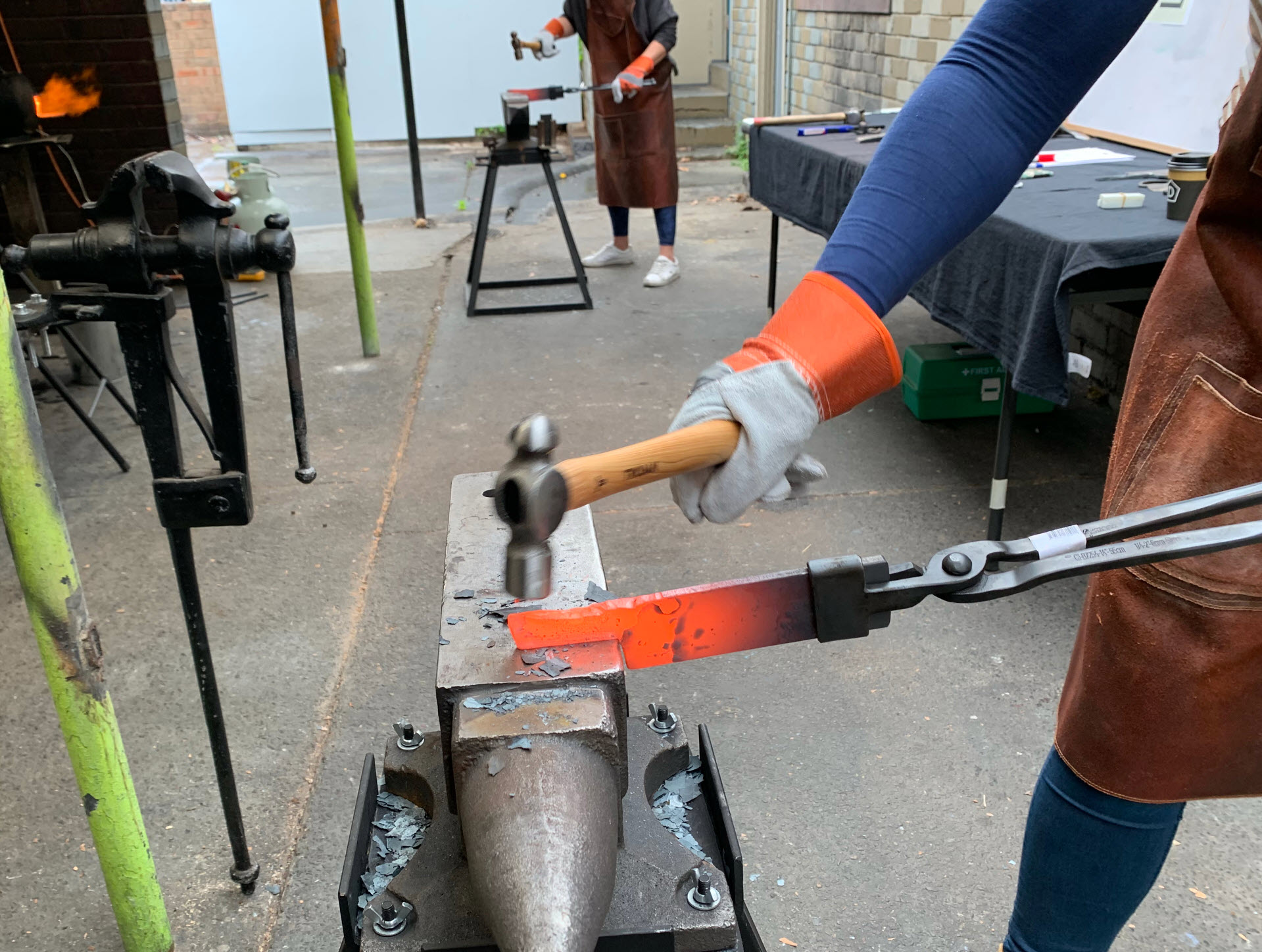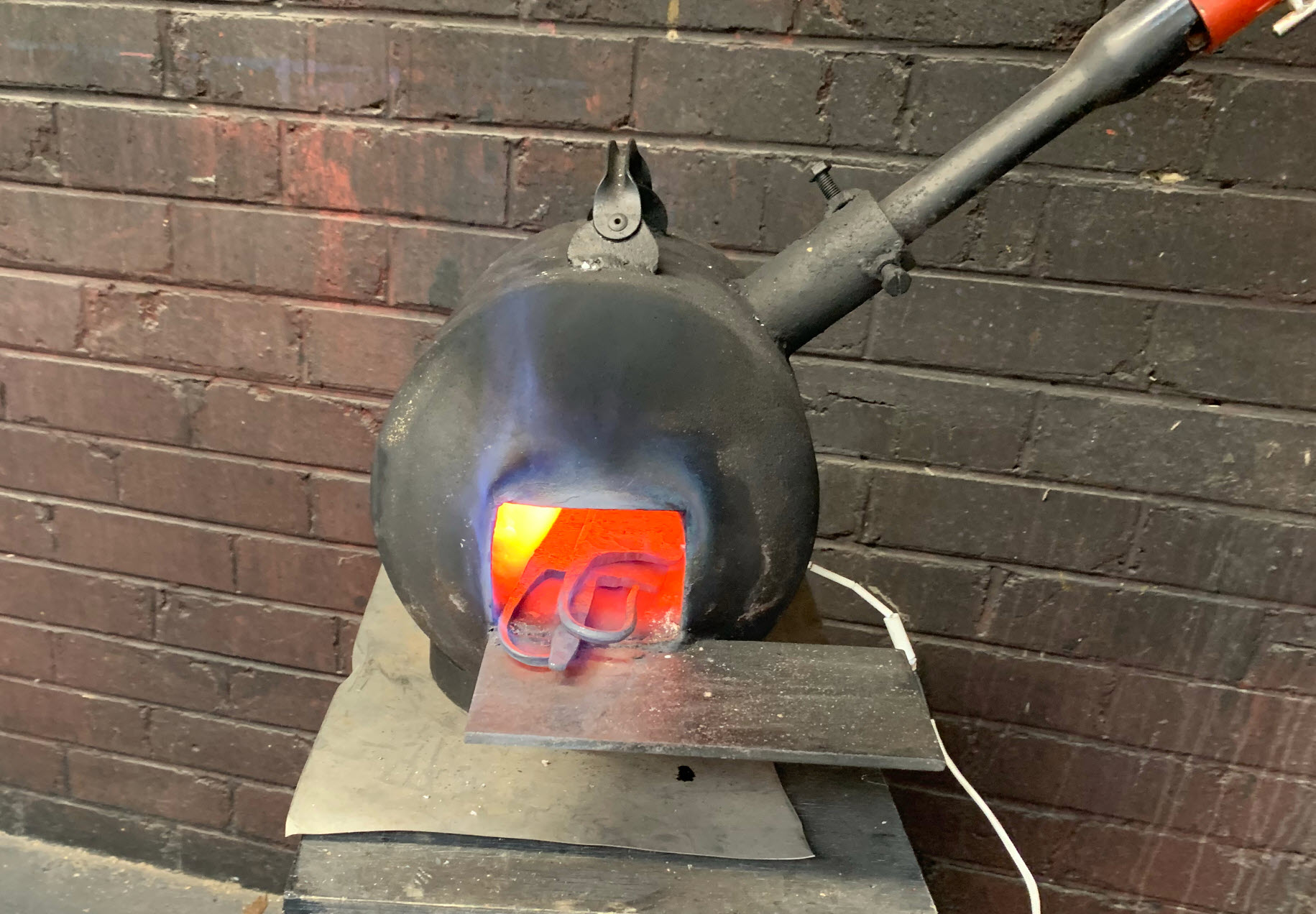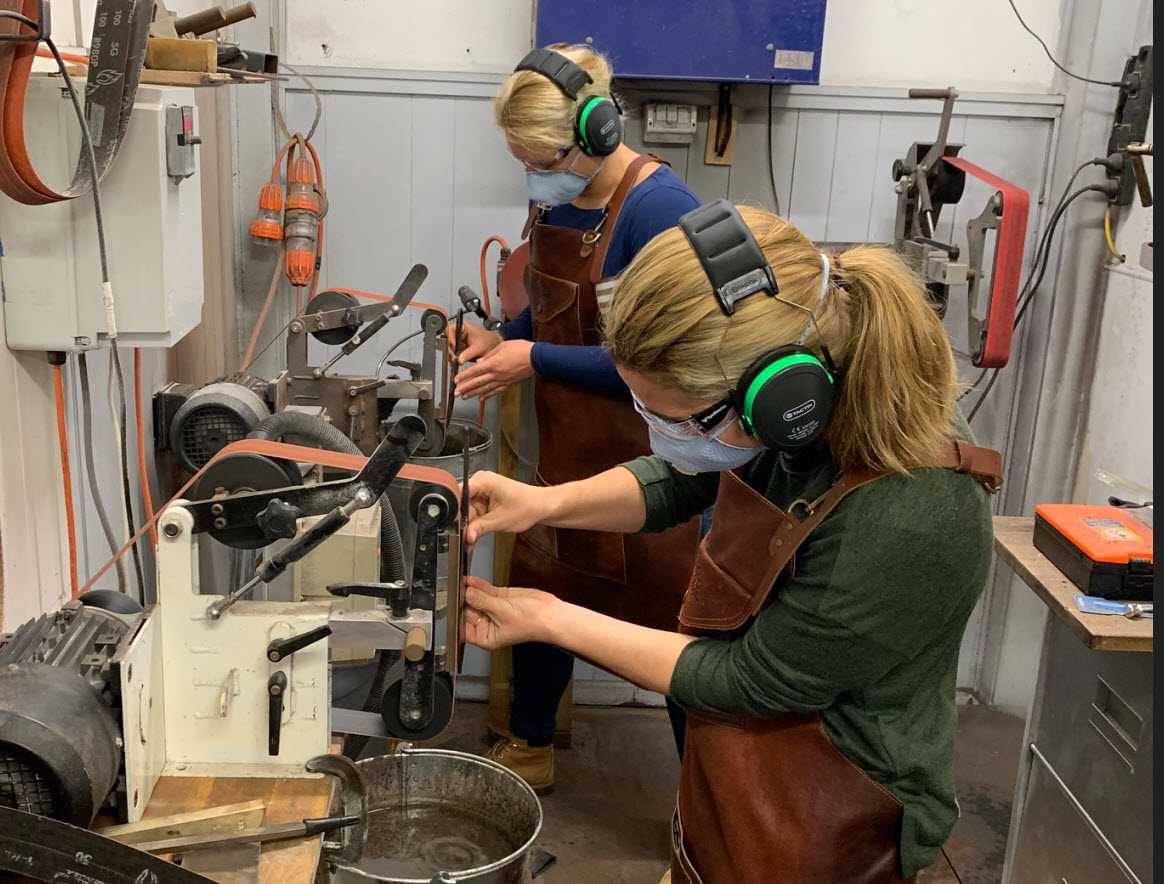Hands-on Blacksmithing Experience in Sydney
Sharing some photos from the Blacksmithing Workshop we had with Zoe and Kat last weekend.
The blacksmithing workshop is held under roof in the Creative Man back yard, held once a month on a Saturday.
We started by covering the tools and safety equipment we would be using, and the forging process of making the knife we would make.
Zoe decided to rather than make the normal herb chopper or pizza-cutter, she would make a chef knife blade, and make the handle at a later time as a project with her father. Ever time she goes back to England they craft something together, and this would be their next project.
Kat was making the normal "all-steel" knife but decided to extend the tang and fold it under the blade in the "viking knife" style. (You will normally make a "kitchen herb chopper" style of knife to make sure we can complete it all in one day. Or decide to only make a blade and come back another day for the Chef Knife Making workshop and then make the handle)

We fire up the forges and get the steel hot! Forging is a bit of work, and we share the work a bit to make it more fun. The two students took turns helping each other out, and the instructor is on hand should you want to get some help with the hammering.
We use anvils to place the steel on while hammering, this creates a stable, flat surface to hammer against. We have a selection of hammers and tongs and through-out the day you get to test out some different styles and see how a peen hammer moves steel differently to a flat hammer face. And why is the horn of the anvil often round?

The blades are in the forge (or furnace which a gas forge is called), getting heated to over 1100 degrees Celcius before we take them out and hammer them to shape. Because steel is "reinforced iron" we need to make sure we hammer the steel only while hot enough. Hammering cold knife steel might cause micro-fractures, the re-inforcing carbon also makes blade steel much more brittle than every-day mild steel.

When the blades were forged to shape, we normalise the blades 3 times from 875 Degrees Celcius. This means that we reduce the temperature of the forge, let the blades soak to temperature and then let them air cool to black, before repeating the process. This reduces stress internally in the steel and helps refine the grain structure, something that will reduce the changes of bending or cracking the blade during quench.

Kat has just proudly quenched her first knife blade! This was just a quick glamour shot after the quench, before the cooling continued in the oil. After the quench the blade is hard, but too brittle so we flame tempered the blades using a gas torch. First we sand the sides of the blade to see shiny steel, and then temper until we get the colours we chase to hit the edge. Meaning the edge hardness is reduced down to a usable knife blade, and the spine and tang softened further, for a more springy and strong blade.

The students are here grinding their blades. This happens in 2 stages; first we flatten the sides, aiming to leave the spine half as it came out of the forge, with the black forge scale on it. Then when the sides are fairly flat and even, we grind to an edge.

Here Zoe is hand-sharpening her Chef knife blade on oil stones. We keep going until you can feel the "burr" or folded over edge steel, meaning that side is sharpened until it hit the other side of the blade, before flipping the blade over and sharpening the same amount on the other side. This first step takes some time, after that the finer grits are much quicker. We completed with a bit of paper cutting just to make sure the blades are sharp enough!

Recent Posts
-
Why Bed The Tang In Epoxy - Then Knock it OFF Again.
What is "Bedding the tang"? Bedding the tang means gluing a stick-tang blade into the handle block i …21st Mar 2025 -
Marble Leather - How to Dip Dye Veg Tanned Leather
This was my first experiment with hydrodipping or dip dying leather, and it came out pretty cool! I …14th Mar 2025 -
Make Burl Wood POP!
Staining wood with leather dye. or "How to make burl wood really pop". This technique really only wo …8th Mar 2025




